One of the great appeals of Europe to cyclists around the world is the plethora of amazing passes to ride. Most have been made famous by the Tour de France: the Galibier, Tourmalet, Ventoux, Alpe d’Huez, and others practically became household names in the Lance era. For Americans, the lure of passes is really only satiated in Colorado and California, where Euro-scale passes like Cottonwood, Independence, and Loveland challenge the ‘Rado-ans and California’s “Death Ride” that has Ebbetts and Monitor passes as well as the Pacific Grade. And I have to give a nod to Montana’s Bear Tooth Pass; from the Red Lodge side it’s almost 6000 feet of climbing and from Cooke City it’s 4500′ into a beautiful alpine zone on a very aesthetic twisty road. But unless you’re a serious cycling geek who cares enough about pro bike racing to watch other races besides the TdF you may not know of the famous passes of Italy that are done annually in the wild weather of spring in the Tour of Italy, which has a history as long as the TdF, starting in 1909. And rising out of the lovely little town of Bormio are the two most famous passes: Passo Stelvio and Passo Gavia.
in 2019 we rode over the Stelvio from the Swiss side (the border is right near the pass) on a tiny one lane road that took us 6000′ up into the alpine, and we blasted down the 47 switchbacks another 6k into Bormio. In the spirit of racers doing back to back hard days we were keen to tackle the Gavia the next day, but much to our chagrin it was closed due to summertime construction, but we were able to climb the (steeper!) Passo Mortirolo, which is also nearby. This summer we were in generally the same neighborhood, and the Gavia was open and inviting (aside from a threat of thunderstorms) and we wiggled our way through the Italian Alps to get to the base and tackle the iconic climb.
The Gavia has a long history of punishing cyclists. It was only paved in the 90’s, and in May of big snow years the mud could be as epic as the snowbanks:
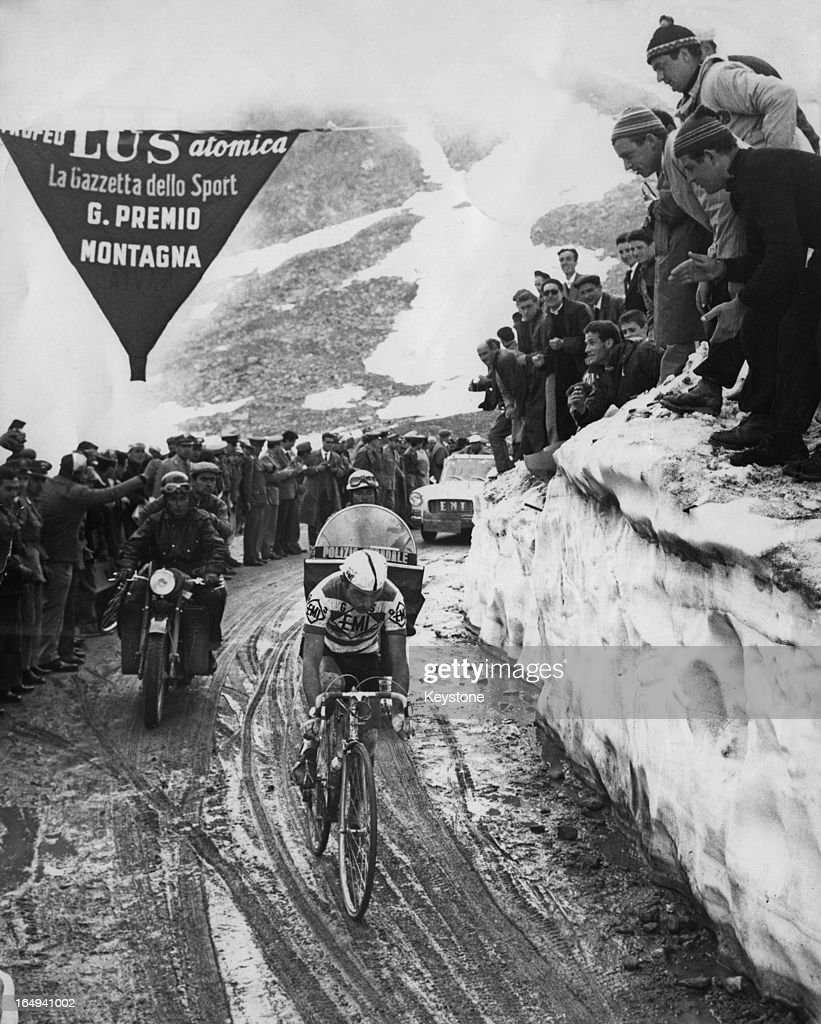
But what solidified the Gavia in the annals of cycling epics was the 1988 Giro d’Italia. American Andy Hampsten and his 7-11 sponsored team was doing well in the general classification, one of the first times that Americans had done that well on the international stage (Greg LeMond won the TdF the following year), and given the forecast of snow on the pass they knew that it would be a make or break stage. Hampsten made a big deal out of making sure that the team had plenty of clothes for him to wear for the long descent into Bormio, while most of his competitors just figured that -as always -they’d just tough it out. But tough it was
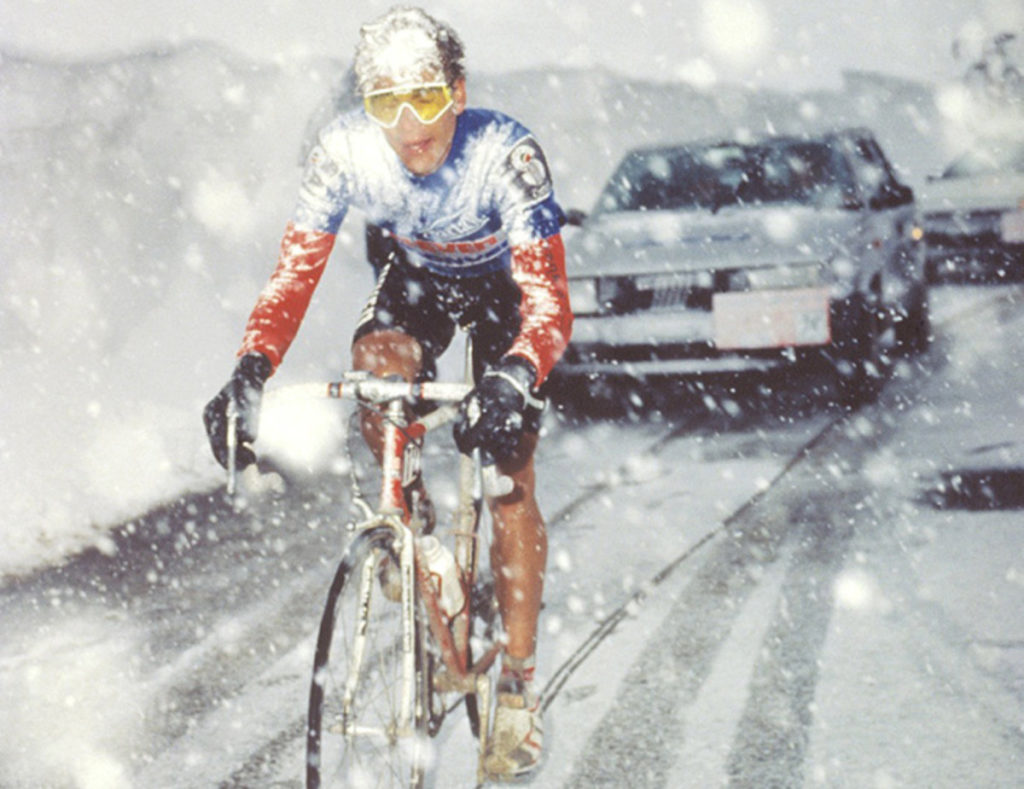
Turns out Andy’s strategy was a good one, and his ability to get over the pass and down to the finish in Bormio and freezing slightly less than his competitors put him in good stead for the rest of the race to win the overall tour. The ever-entertaining Bob Roll has a great description of that stage here.
Our day was not going to be like that, though with thunderstorms in the forecast I had some concerns; a 6000′ descent in the rain in midsummer can be pretty numbing. But Ashley had a great idea: stay at the pass. Most of the Alps’ iconic passes have hotels on them, it was to be our second pass of the day (Passo Tonale is actually pretty awful; not very aesthetic riding and the pass itself is super busy, with a huge flea market!) and if it did rain, we wouldn’t have to descend and freeze. As usual, we made “a plan” without really confirming that it would work, but we figured that a coupla scraggly ‘mericans on loaded bikes would be accommodated somehow.
Near Ponte Di Legno, the village at the southern base of the pass we decided that I would take a quick detour into town to find an ATM because we weren’t sure if the hotel at the summit would take a card (and while I was there I visited a pattisserie to fuel up, of course) as Ashley rolled on up the climb. Given her head start and the ominous clouds that were starting to build I was given’er, but even with a few months of riding in my legs the climb started to sting. Here’s the profile of the south side:
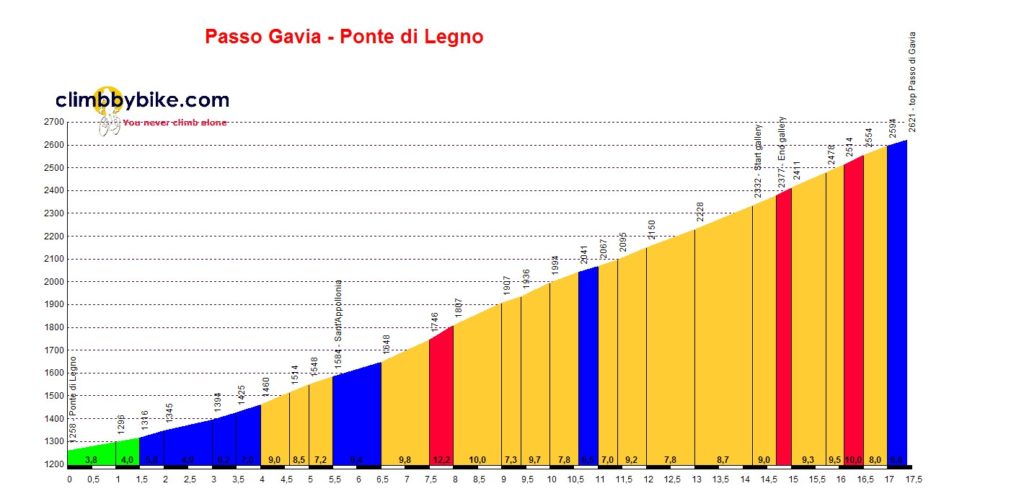
with an average grade over the 17.5 km (a little over ten miles) of 8%. The road was tiny; “singletrack” in Scottish, but with far fewer turnouts for cars than the more-forgiving Scottish moors have. Out of town I carried almost no water to save some weight (a bit laughable when my bike and gear already weigh over 50 lbs!) but I didn’t anticipate that the dry south side wouldn’t have much in the way of roadside springs, so I was worrying a little about that as well, since I have a bit of a habit of melting down, but about 2/3 of the way up I found not only a little spring but also Ashley, and we continued to crawl up the little road as it transitioned from thick trees to sweeping alpine views. When we did a tour a few years ago in Ethiopia we learned that as a function of Italy’s long – and unsuccessful -effort to colonize Ethiopia they built a lot of roads in the mountains there, and the Italians are so good at making roads that I can only describe as “sexy”
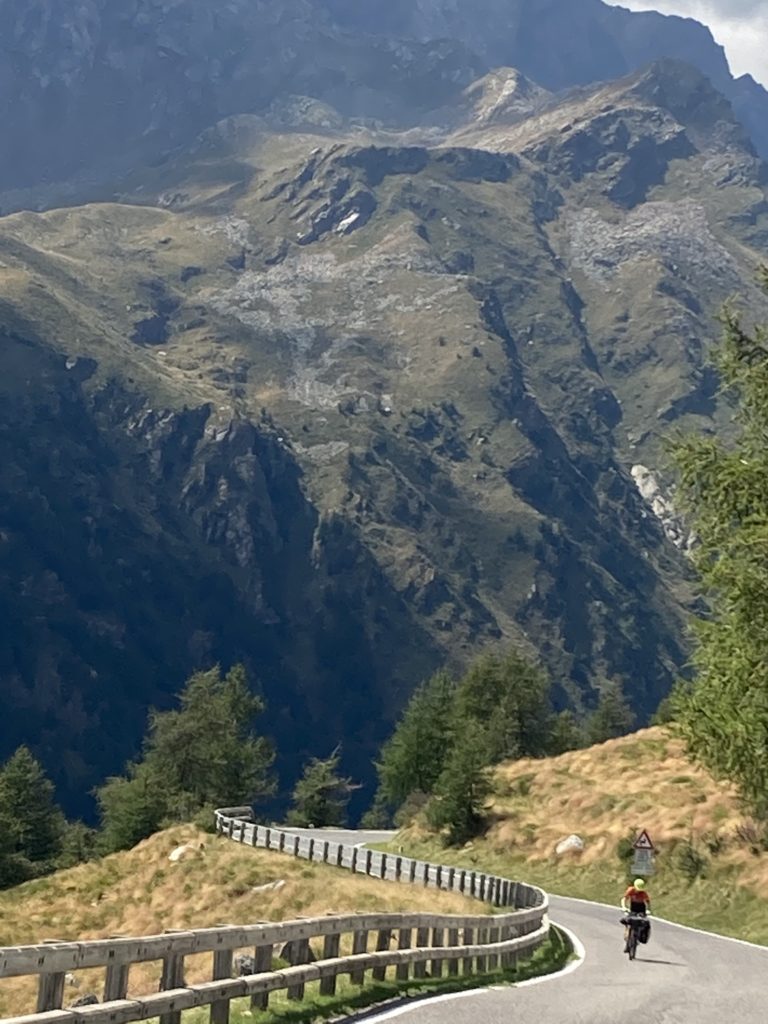
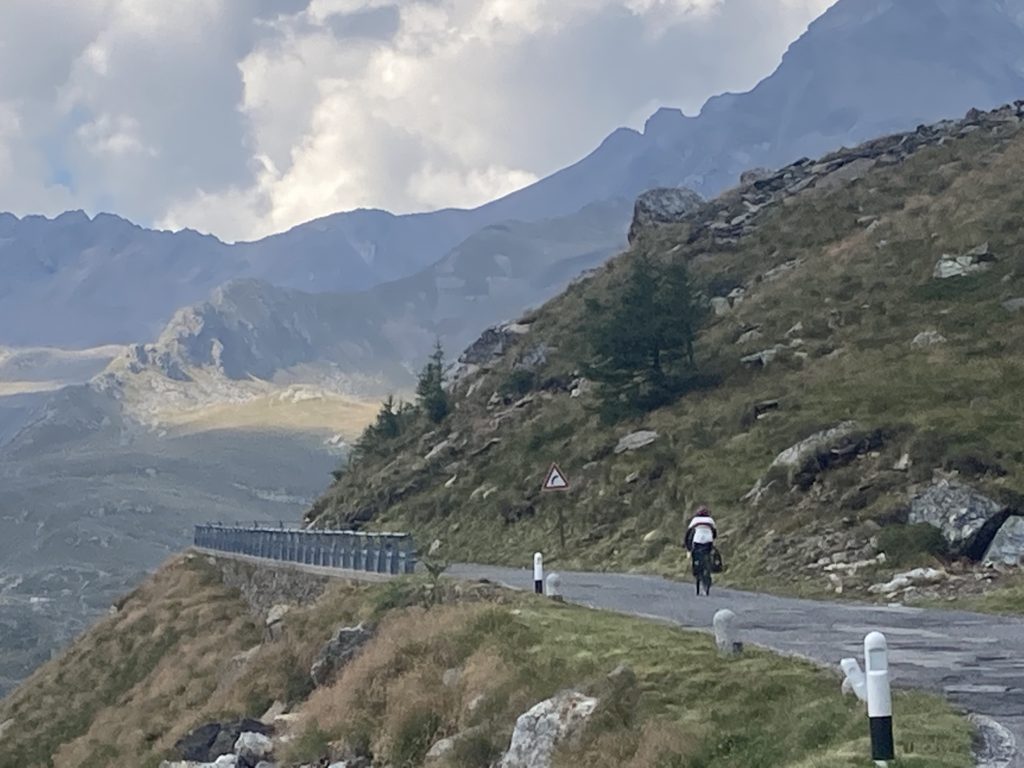
We knew from the map that there was a tunnel, but we correctly anticipated that it wouldn’t be too long and that there’d be a viable go-around, which there was:
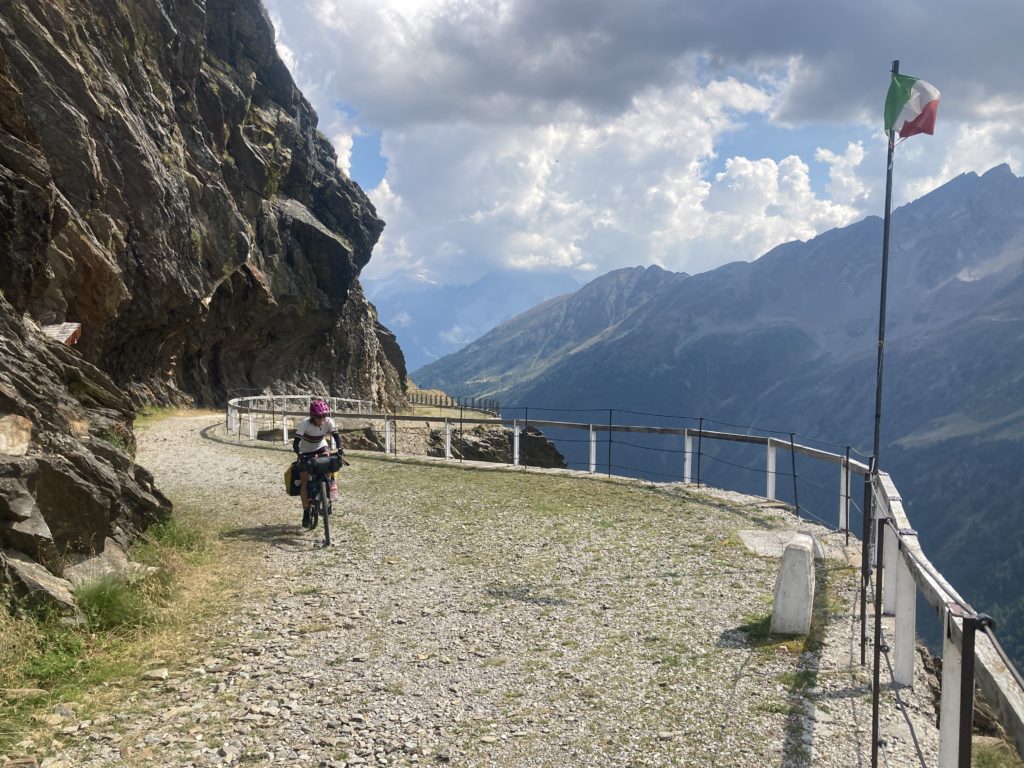
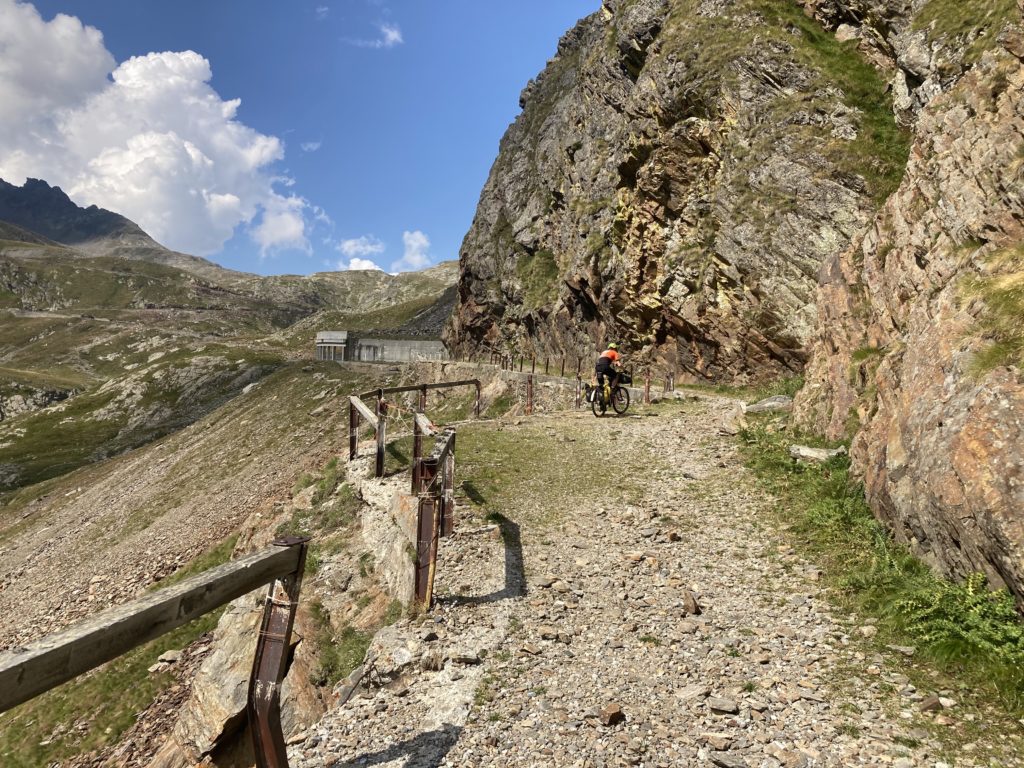
After a couple of hours of slow grinding with stops for snacks and views, we finally topped out
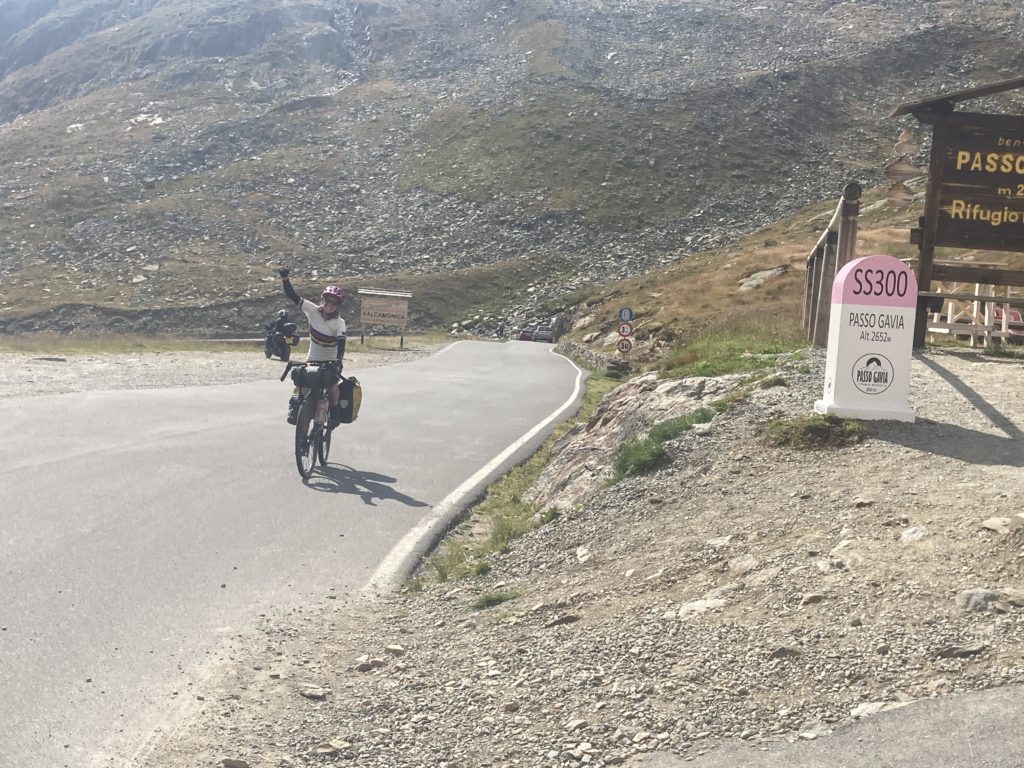
You can see on the right side of the pic above the word “Rifugio” and indeed they had room for us and could feed us the house meal for the evening. The ominous clouds had dissipated as we climbed, but we were keen to spend the evening there and do a nice hike from the pass the next morning.
The Rifugio Bonnatta is a combination store, restaurant, hotel, and shrine to the cyclists who have ridden over the beloved passo.
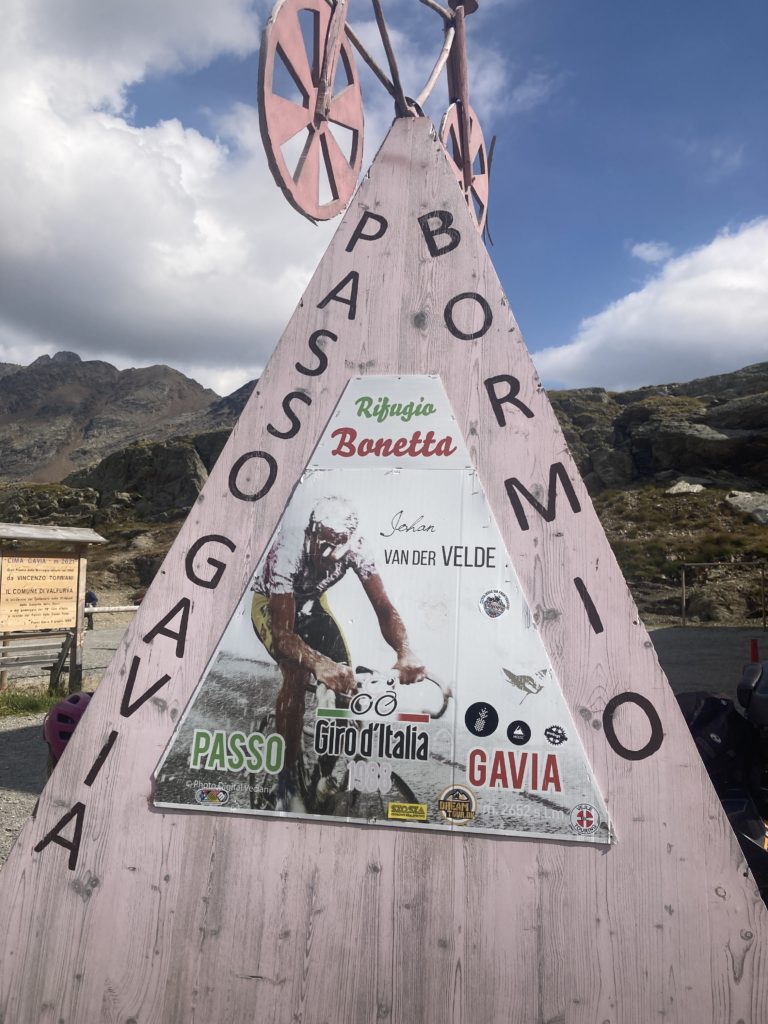
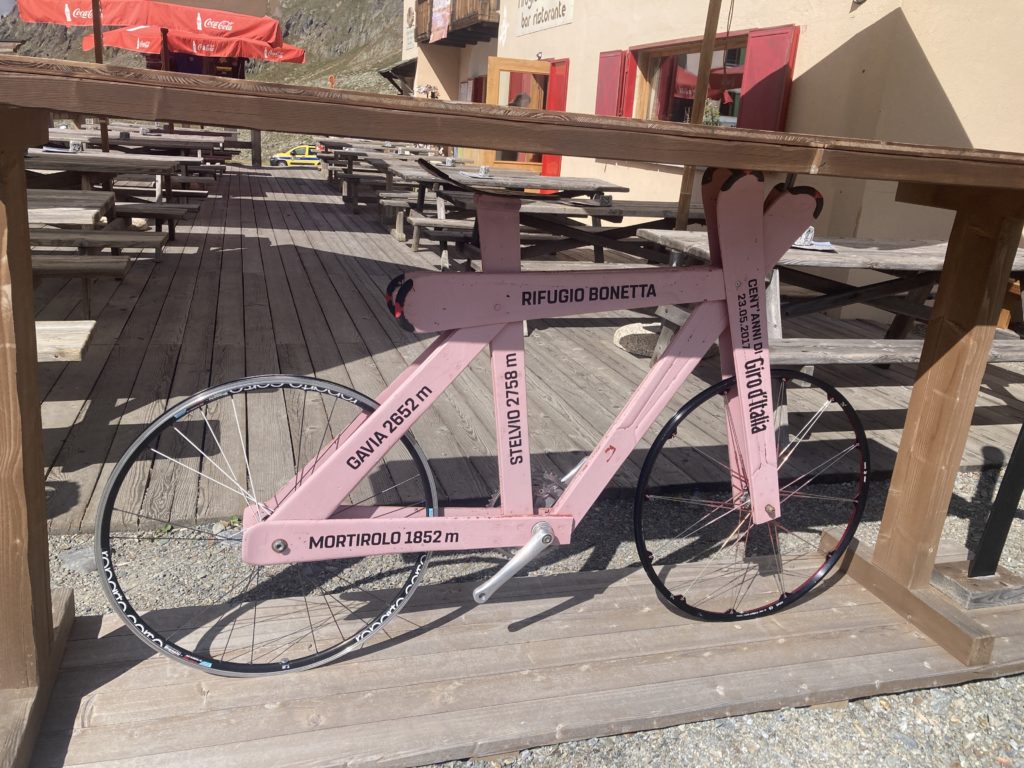
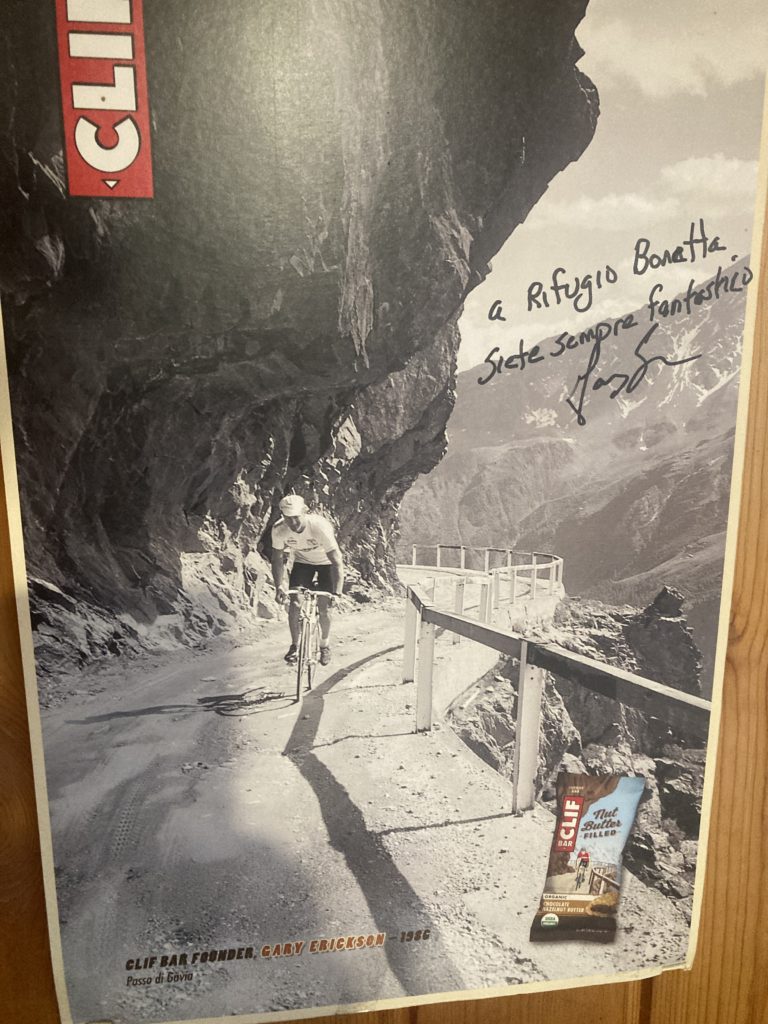
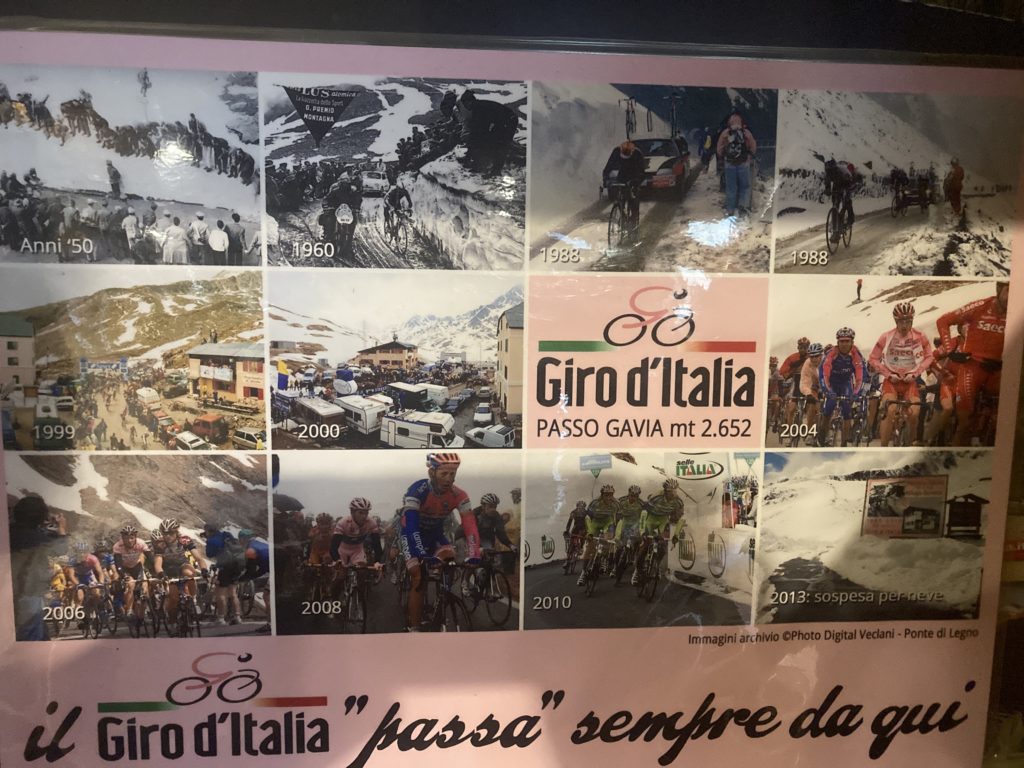
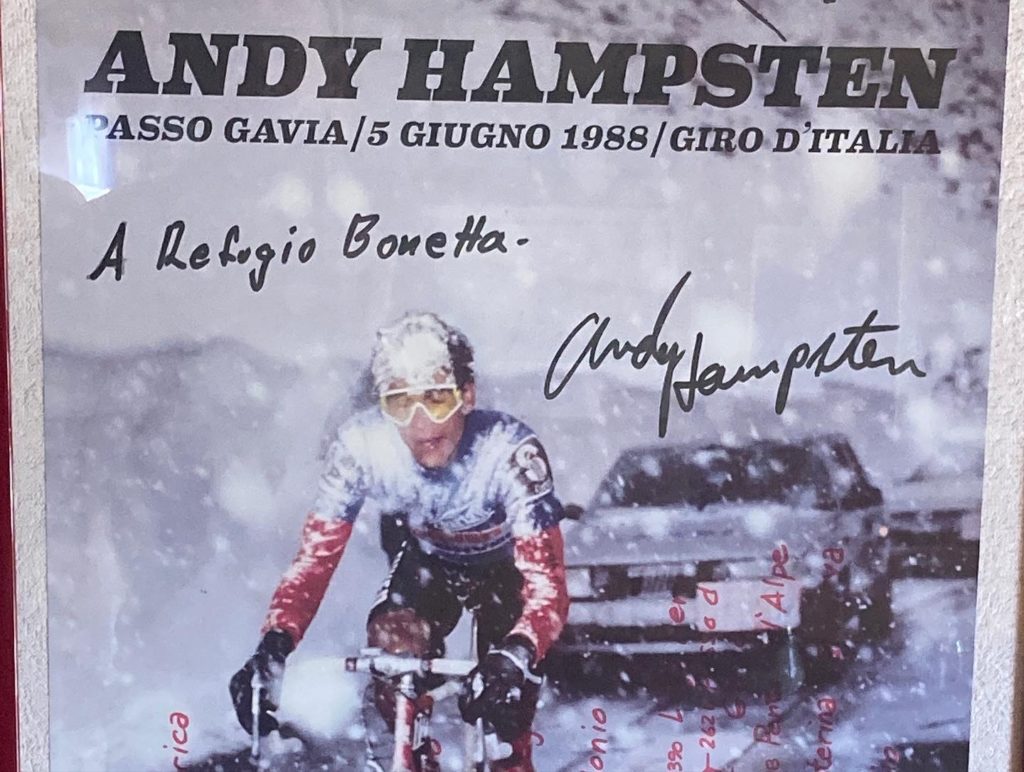
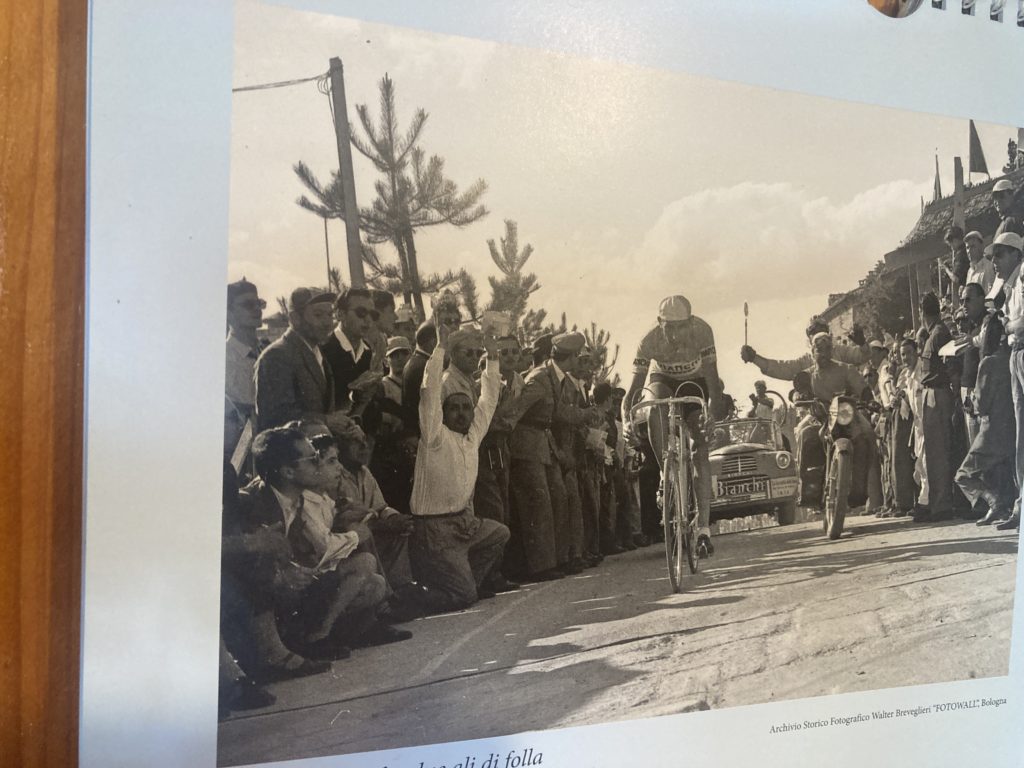
Three notable cyclists feature prominently in the “museum”: Gino Bartali (who won several Giro d’Italias before and after World War and used his fame and training regime to transport ID papers to help Italian Jews escape Mussolini, which made for an amazing tale in the book Road to Valor):
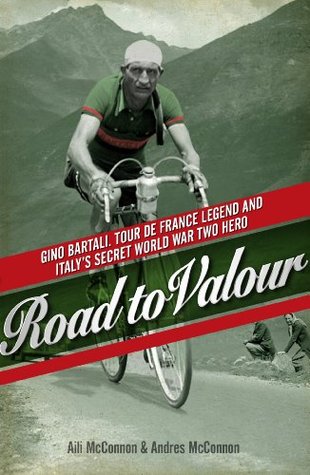
And his rival Fausto Coppi, who earned the moniker “Champion of Champions” for his storied career.
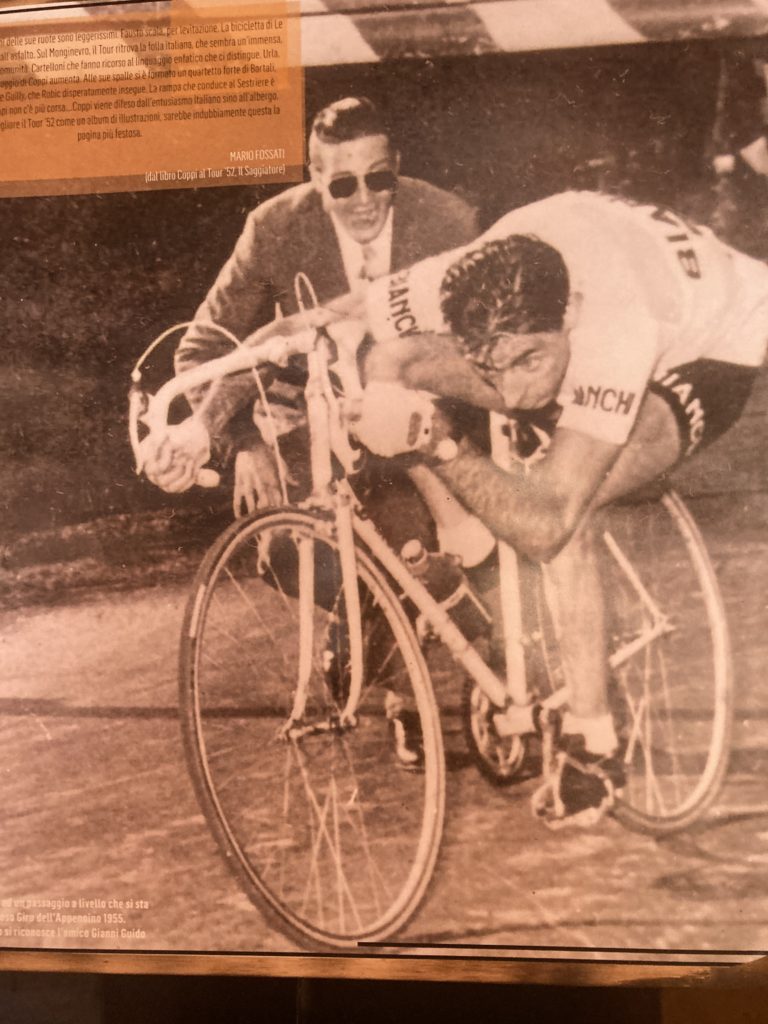
while they didn’t battle it out over the Gavia, they loom large in the lore of Italian cycling.
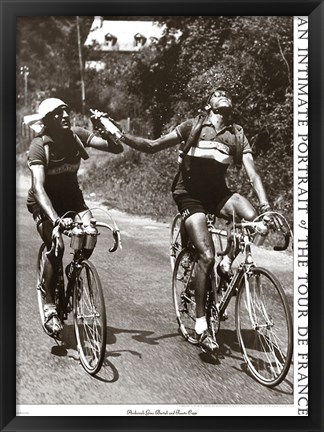
While Coppi is/was a national hero, he caused a huge amount of controversy because of a pretty overt affair with a married woman, which resulted in the pope getting involved (refusing to bless the start of the Giro that Coppi was in), a police bust to see if they were sleeping together, etc. before he died an untimely death at 40 of malaria.
Another slightly-less famous Italian cyclist is Gianni Motta, who won the 1966 Giro:
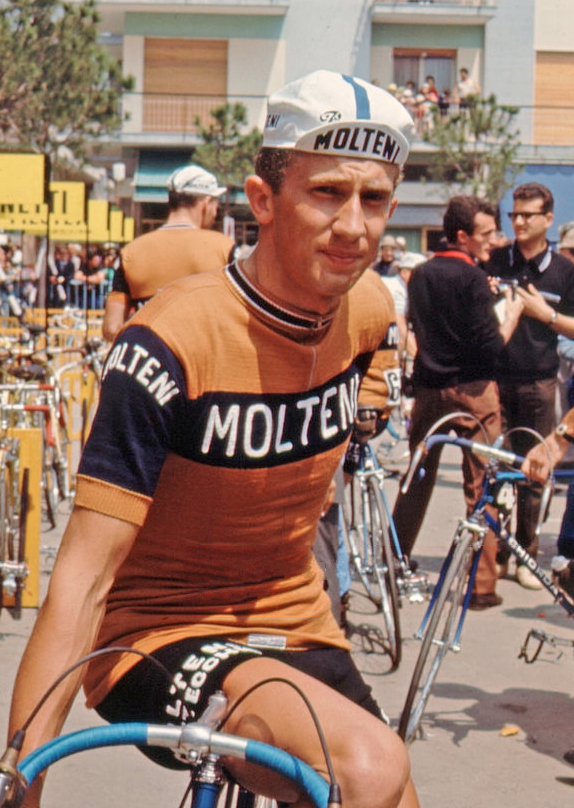
And much to the delight of the Rifugio, Gianni came back to ride the pass just a few years ago:
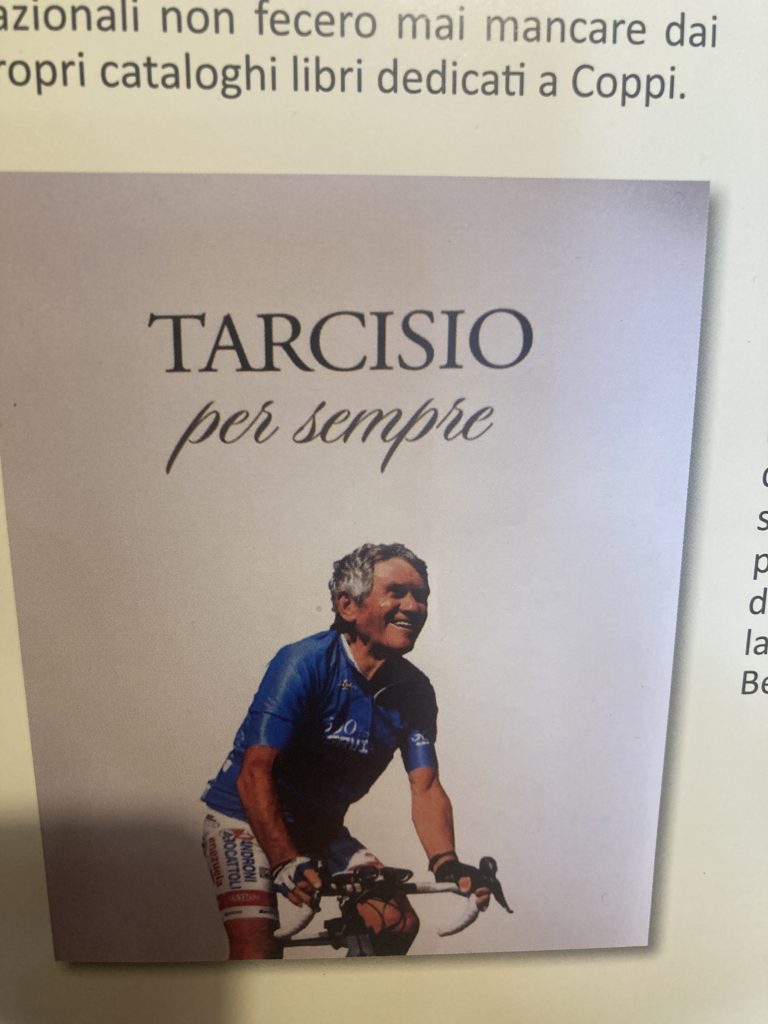
The Rifugio also hosted high end athletes in other sports:
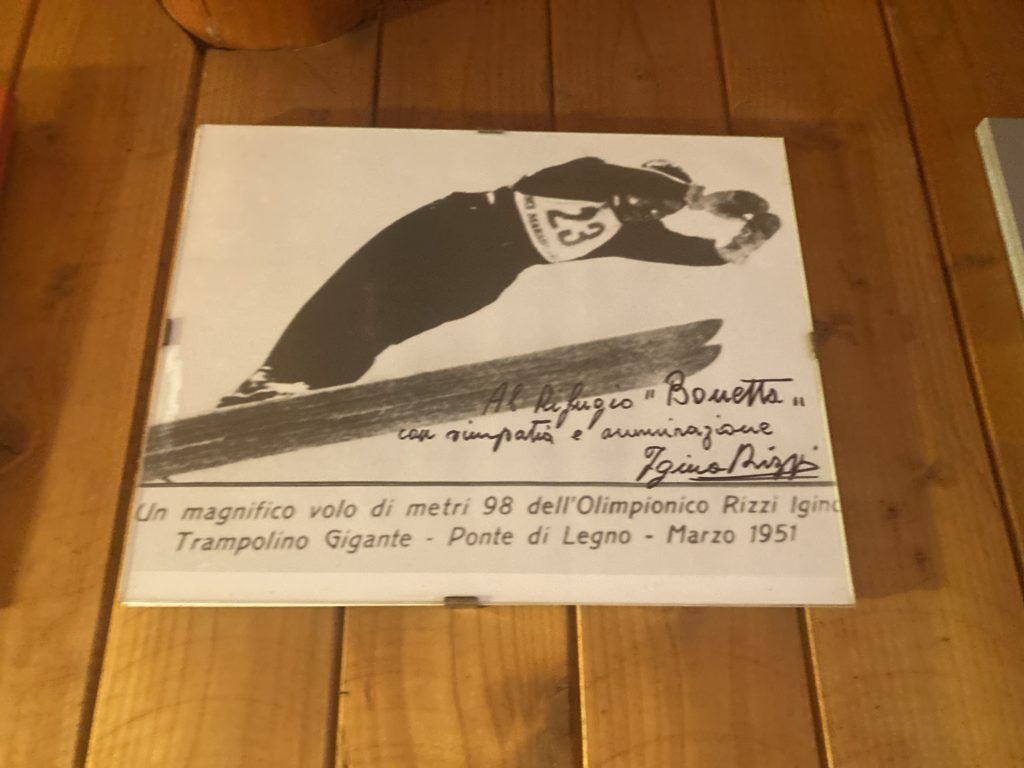
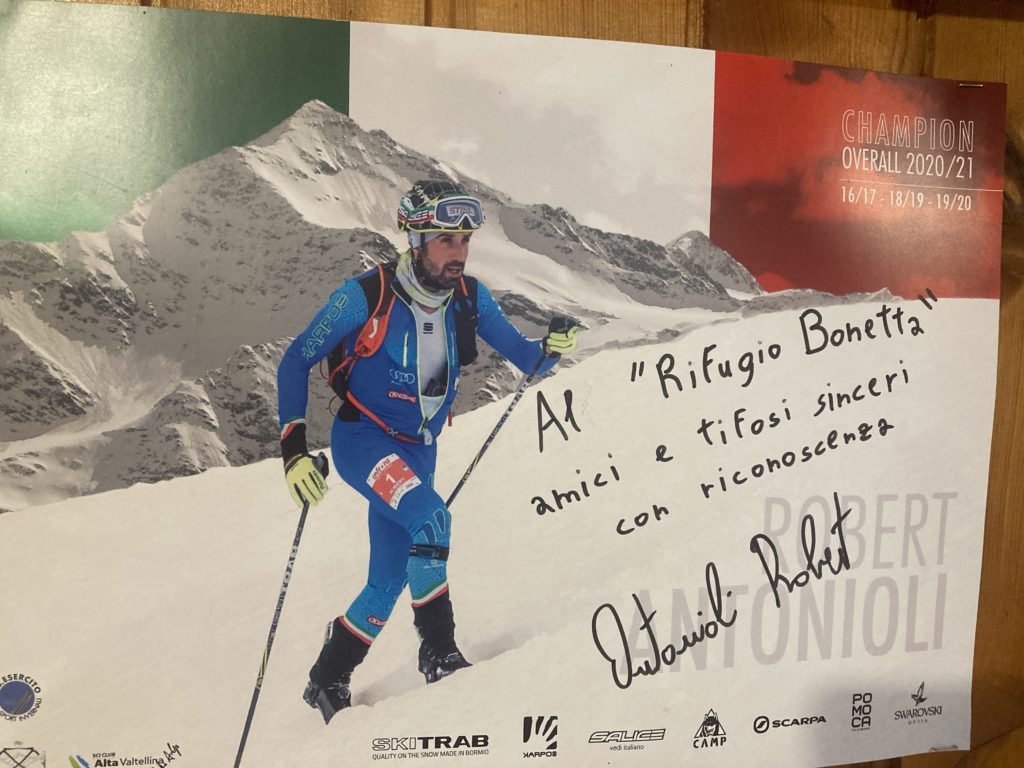
After a fabulous dinner high in our intimate rifugio I went outside for a bit to wander around and check out the stars and such, and to my surprise a couple of cyclists rolled up. One of them was doing the Trans-Continental bikepacking race; a 2500 mile race across Europe. It’s a testament to the fame and integrity of Passo Gavia that it’s one of only five formal checkpoints between Belgium and Slovenia!
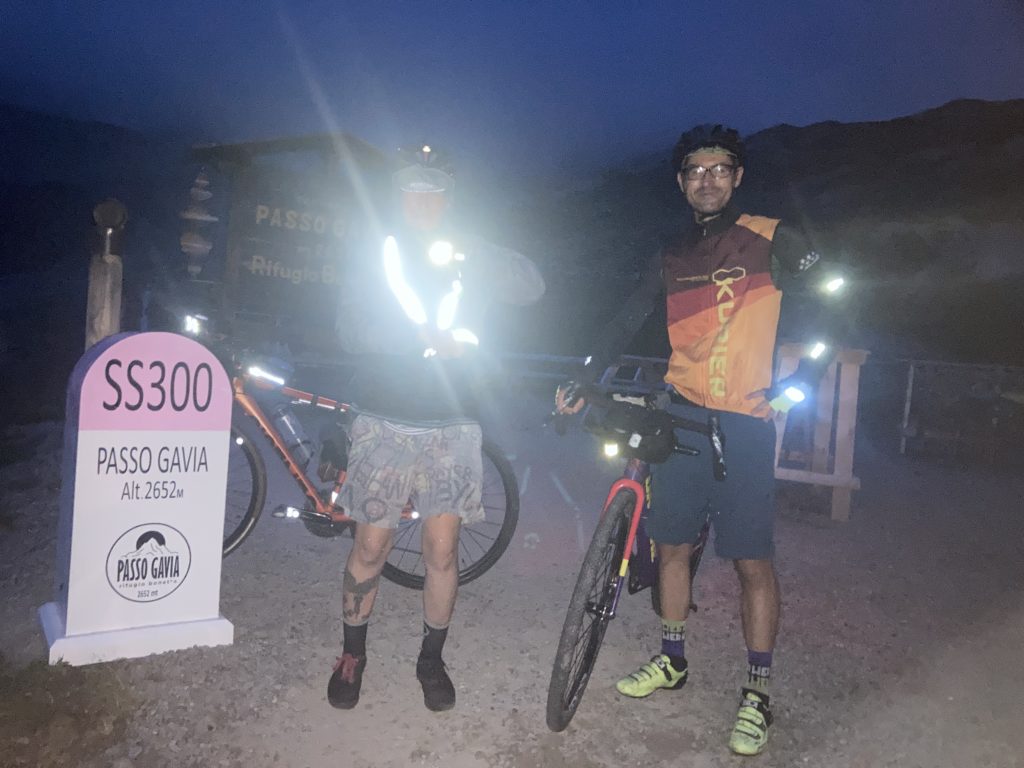
Like pretty much all the big passes in the Alps, there are some nice hiking trails that go up from the passes to the adjacent ridges and peaks, and the Gavia was no exception:
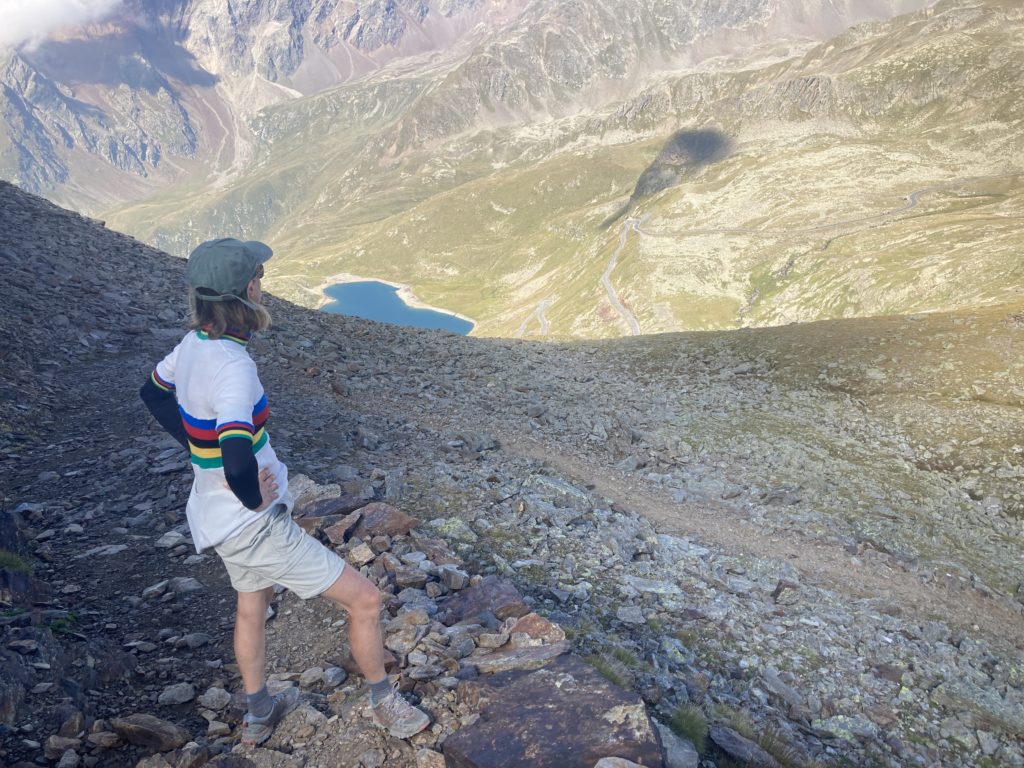
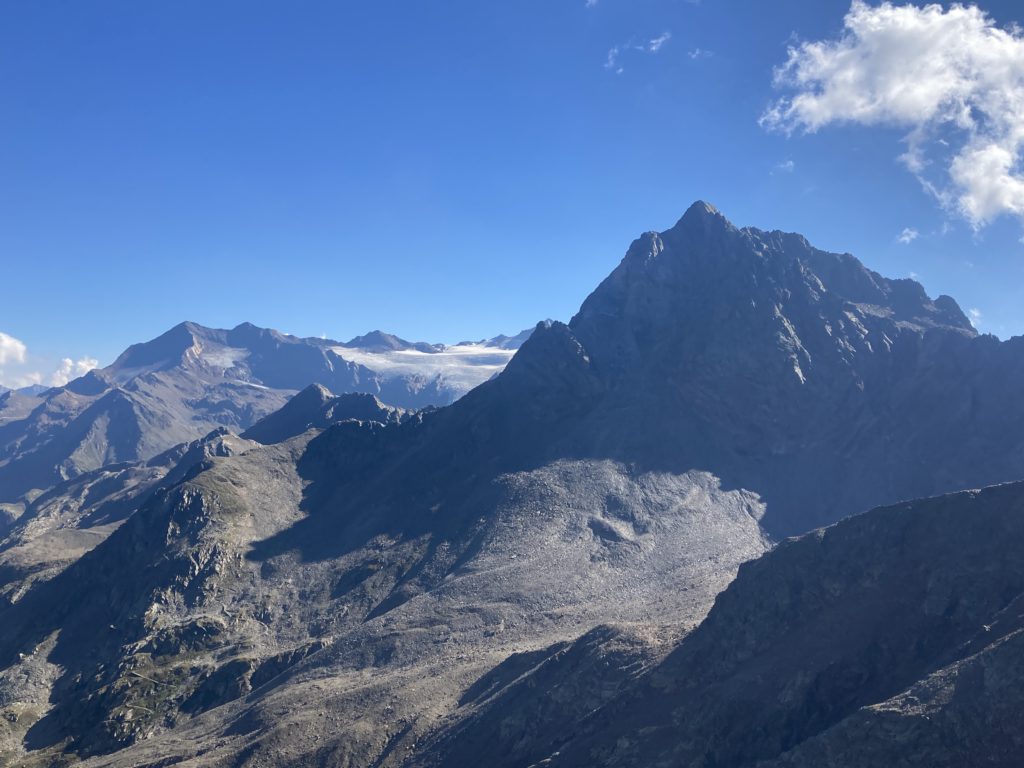
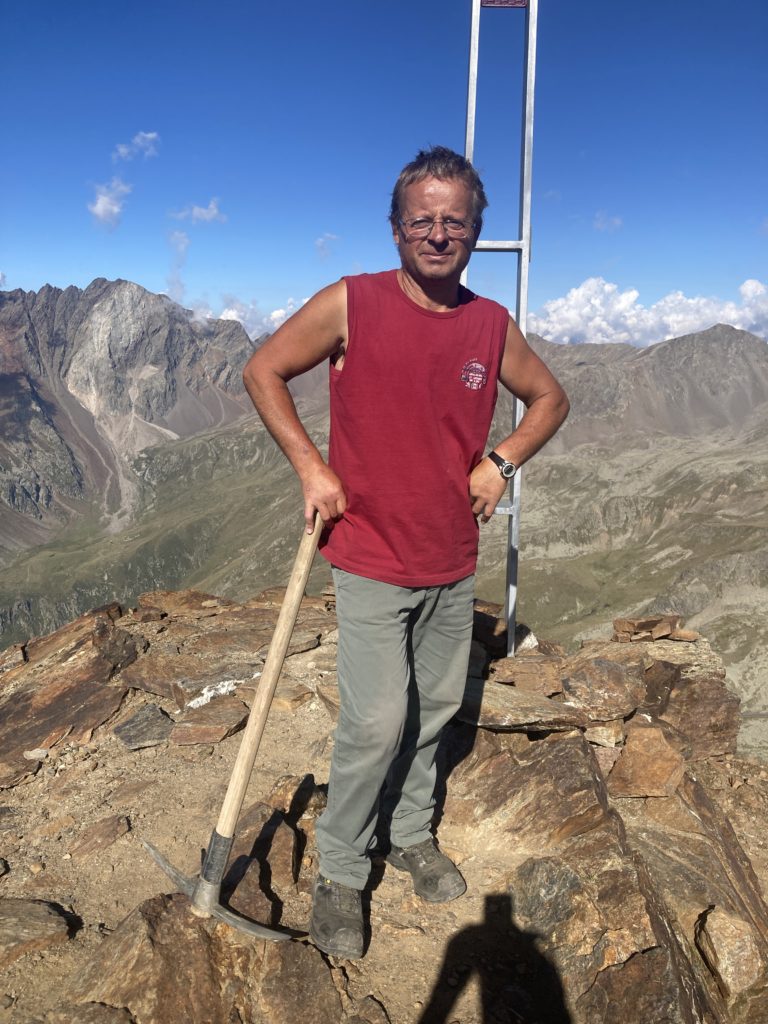
We finally mounted up for our descent, down the north side of the pass, being careful to avoid the locals:
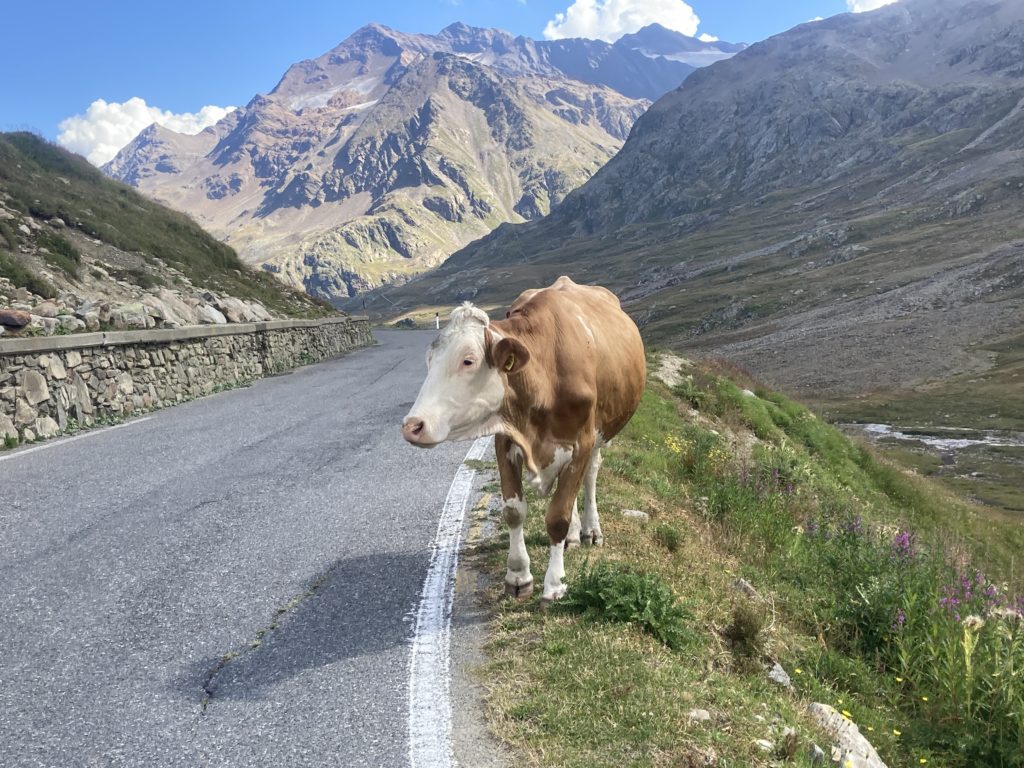
And again the sexiness of the road made for a glorious, high speed descent around perfect corners. The north side is a little less steep – and accordingly, is a bit longer – which I think actually makes for a better descent without as much braking. And even midweek, it was busy; we saw literally hundreds of cyclists climbing towards us, including a kid who was about 2/3 of the way up who had to be no more than 6 years old!
We have had the good fortune to ride over a lot of passes on our various tours (though we need more in our neighbor states of California and Colorado) and generally I’m not too keen to rank/rate the quality of this awesome thing vs that awesome thing, but our experience of climbing and descending the beautiful and storied slopes of the Passo Gavia is one that will stick in our memory banks for a while.
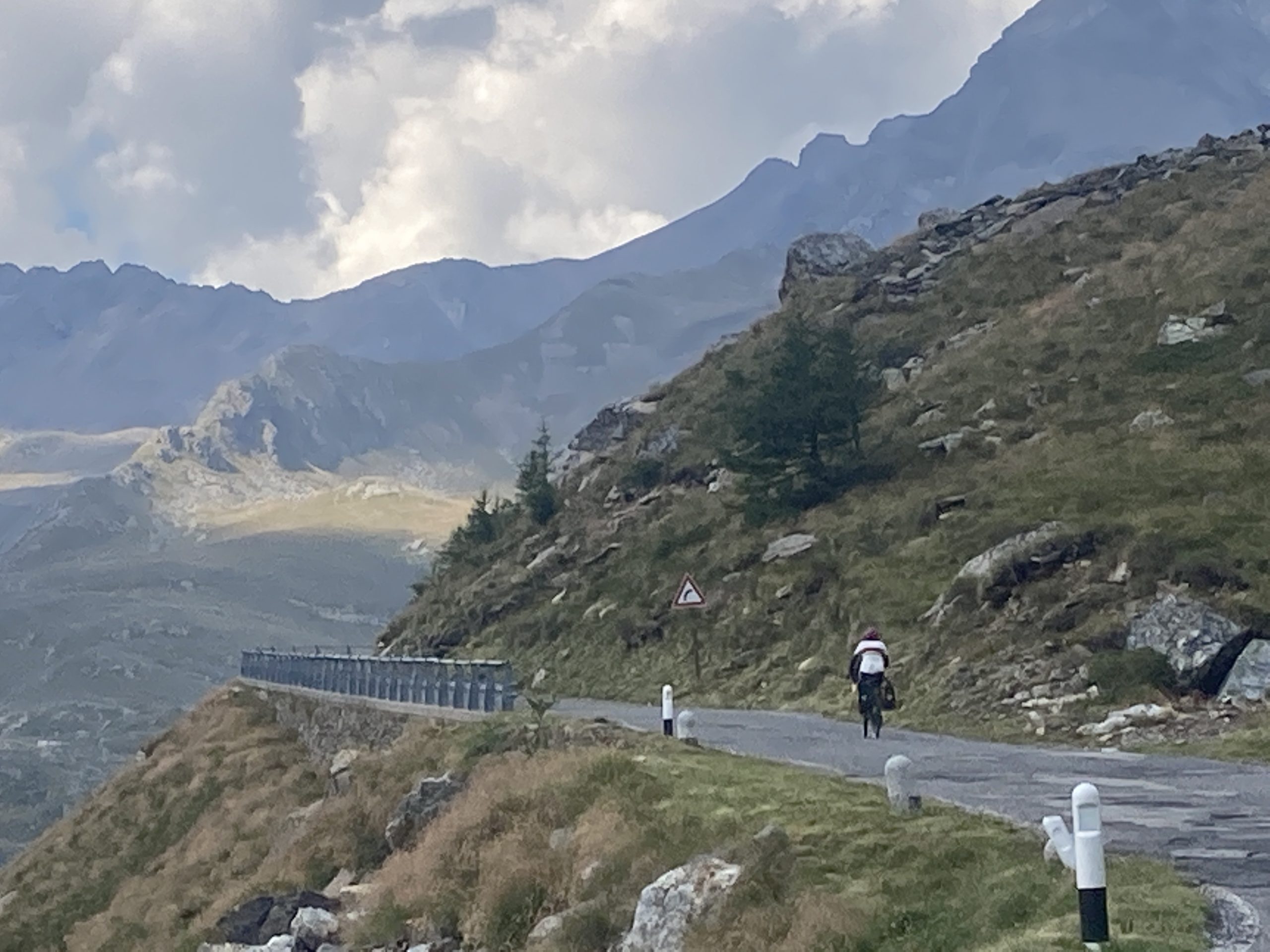
What a sound decision to stay at the Passa Gavia “Rifugio”. As always I learn a lot more than I ever knew before from your “rants”. Made it very informative as well as entertaining. European cyclist history was not in my wheelhouse!